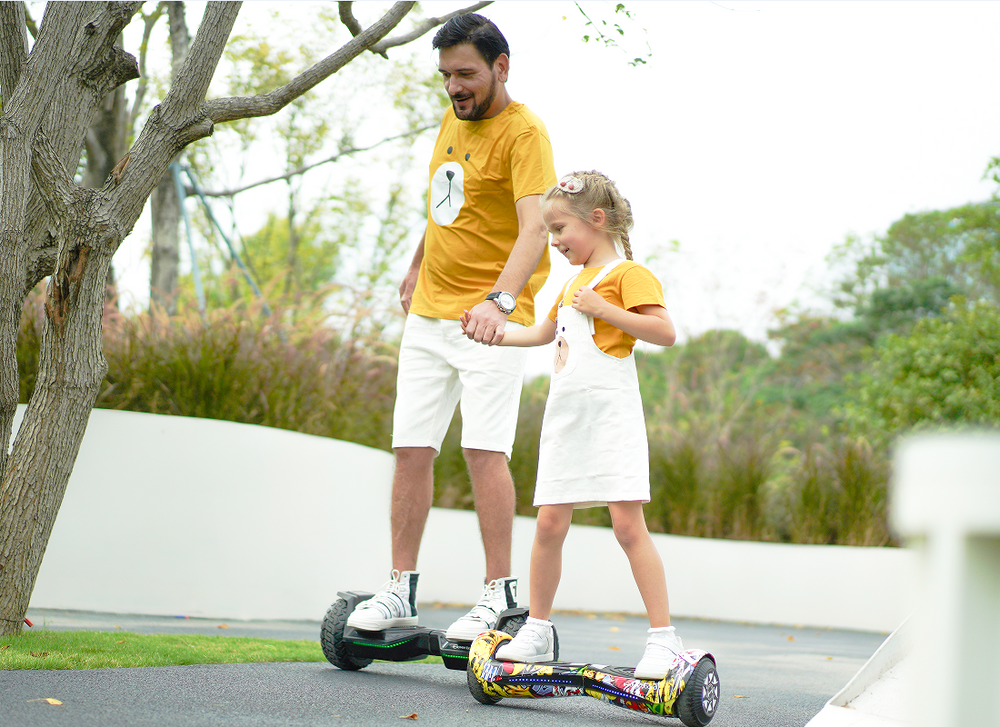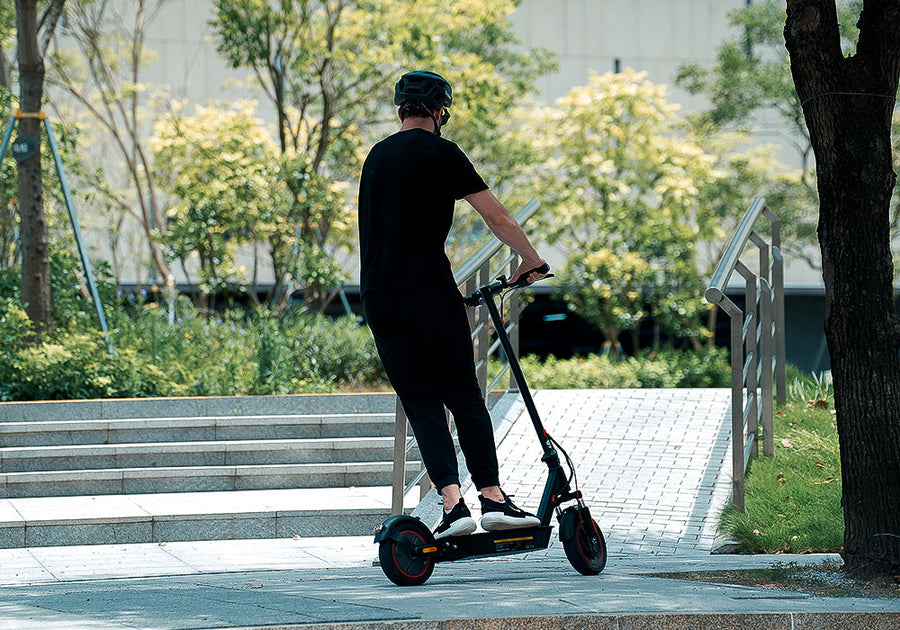
Hoverboard Motherboard Replacement – Step-by-Step Guide
If your hoverboard has stopped balancing, beeps continuously, or refuses to turn on, the issue likely lies within its motherboard. The hoverboard motherboard is the central circuit that powers and controls every movement of your self-balancing scooter.
A professional repair isn’t always necessary — with a reliable hoverboard motherboard replacement, you can easily bring your hoverboard back to life at home. This guide walks you through every step of the process, from removing the old board to installing and testing the new one for safe, smooth operation.
Whether you’re fixing a classic model or upgrading a Bluetooth hoverboard, this detailed walkthrough ensures you can confidently complete a hoverboard motherboard replacement and enjoy a flawless ride once again.
When You Need a Hoverboard Motherboard Replacement
The hoverboard motherboard is the heart of your self-balancing scooter. It controls power flow, communication between sensors, and how the motors respond to your movements. When it starts to fail, your hoverboard may behave unpredictably — or stop working altogether. Knowing when you need a hoverboard motherboard replacement can save you time, frustration, and unnecessary repair costs.
Here are the most common signs that your motherboard may need replacing:
1. The Hoverboard Won’t Turn On
If your hoverboard refuses to power up even after a full charge, the motherboard could be damaged. Before replacing it, check that your charger and battery are functioning properly. If both are fine but there’s still no response, it’s a strong indicator that the motherboard has failed and requires replacement.
2. Flashing Red or Continuous Beeping
Hoverboards are designed to signal internal problems through beeping sounds or flashing lights. A continuous red light or repetitive beeping often points to a motherboard malfunction. In most cases, replacing the hoverboard motherboard resolves these error codes instantly.
3. Hoverboard Not Balancing or Tilting Erratically
When a hoverboard suddenly starts tilting, spinning, or losing balance, it usually means the motherboard or one of the gyroscopes has failed. Since both components communicate closely, replacing the hoverboard motherboard along with its gyroscope boards is often the best solution.
4. Only One Side of the Hoverboard Works
If one wheel moves but the other doesn’t, the issue is typically linked to a faulty gyroscope or partial motherboard failure. A hoverboard motherboard replacement restores even motor control, ensuring both sides move smoothly again.
5. Random Power Cuts or Sudden Shut-Offs
A damaged motherboard can cause your hoverboard to switch off unexpectedly, even when the battery is charged. This happens due to internal power regulation issues on the circuit board. Installing a new motherboard prevents these power interruptions and improves reliability.
6. Burnt Smell or Visible Damage
If you notice a faint burning odour, melted wires, or visible damage to the circuit board when you open the hoverboard, it’s unsafe to continue using it. In this case, a hoverboard motherboard replacement is essential to avoid further electrical issues or potential short circuits.
7. Bluetooth or Light Functions Not Working
Sometimes, the Bluetooth module or LED lights fail because of motherboard communication errors. When these features stop working together, replacing the motherboard usually restores all functions in one go.
Tools You’ll Need for Hoverboard Motherboard Replacement
Before you begin your hoverboard motherboard replacement, it’s important to have the right tools and workspace prepared. Having the proper equipment ensures a smooth installation process, helps you avoid damage to delicate parts, and keeps you safe while handling electronic components.
Below is a complete list of tools and materials you’ll need to replace your hoverboard motherboard safely and efficiently.
1. Phillips Head Screwdriver
Most hoverboards are held together with small Phillips screws. You’ll need a precision or small-size Phillips screwdriver to open the hoverboard casing, remove the old motherboard, and install the new one. A magnetic screwdriver can be particularly helpful to prevent losing tiny screws while working.
2. Needle-Nose Pliers
A pair of needle-nose pliers helps you grip small wires and clips that are difficult to reach with your fingers. They are especially useful for gently disconnecting cables attached to the motherboard and gyroscopes. Choose pliers with a fine, narrow tip for better control when handling tight connectors.
3. Hot Glue Gun (Optional)
If your hoverboard includes Bluetooth or LED components that are glued to the shell, you’ll need a hot glue gun to reattach them securely after installing the new motherboard. A low-temperature glue gun is best, as it won’t melt surrounding plastic parts.
This tool also comes in handy for reinforcing loose wires or stabilising parts inside the casing to prevent rattling during rides.
4. Small Containers or Magnetic Tray
Hoverboards contain multiple small screws and components that are easy to lose. Keep a small container, magnetic tray, or organiser nearby to safely store screws and clips during the hoverboard motherboard replacement process. Labelling sections for each side of the board can help you remember where everything goes.
5. Clean, Flat Workspace
Choose a stable surface with enough lighting and room to lay out both halves of your hoverboard. Avoid carpeted areas, as static electricity can damage circuit boards. Placing a soft cloth or anti-static mat under your hoverboard helps protect the plastic shell from scratches while you work.
6. Camera or Smartphone
Before disconnecting any wires, take clear photos of your hoverboard’s internal wiring. This step will make reassembly much easier, especially if your replacement motherboard has similar connectors in different positions. These photos serve as a visual reference to ensure all cables are correctly reattached later.
7. Safety Gear (Optional but Recommended)
Although a hoverboard motherboard replacement is a low-risk DIY repair, it’s still a good idea to take basic precautions:
-
Rubber or anti-static gloves – protect your hands and prevent static discharge that could harm sensitive electronics.
-
Eye protection – shields your eyes in case a screw or wire snaps while being handled.
8. Replacement Hoverboard Motherboard Kit
Lastly, make sure you have a compatible hoverboard motherboard replacement kit ready before you start. Most hoverboards use either a 2-piece (gyroscope only) or 3-piece (motherboard plus two gyroscopes) kit. If possible, choose a high-quality replacement set designed for your hoverboard model — such as those available from iHoverboard UK. Using genuine, tested components ensures long-term performance and safety.
How to Remove the Old Hoverboard Motherboard
Once you’ve prepared your tools and workspace, it’s time to remove the old motherboard from your hoverboard. This process requires patience and attention to detail, but with the right approach, anyone can do it safely at home. Follow these steps carefully to ensure a smooth hoverboard motherboard replacement.
Step 1: Power Off and Prepare the Hoverboard
Before opening the hoverboard, make sure it’s completely powered off and unplugged from the charger. This step prevents any risk of electric shock or short circuits.
If your hoverboard recently ran out of power, let it rest for at least five minutes to discharge any remaining electricity.
Next, place the hoverboard upside down on a clean, flat surface covered with a soft cloth or anti-static mat. This protects the casing from scratches while you work.
Step 2: Open the Hoverboard Shell
Using your small Phillips screwdriver, remove all the screws along the underside of your hoverboard. You’ll typically find 6 to 10 screws per side, depending on the model.
Keep these screws in a small container or magnetic tray — you’ll need them later when closing the hoverboard.
Once all screws are out, gently lift the bottom cover. Be careful not to pull too quickly — there may be wires connecting the LED lights or speakers to the motherboard. Disconnect these carefully before fully removing the shell.
Step 3: Disconnect and Remove the Battery
Before touching the motherboard, always disconnect the battery. Locate the large yellow or white connector that links the battery to the motherboard and gently unplug it using your fingers or needle-nose pliers.
Removing the battery ensures no current runs through the circuit while you work.
For extra safety, press and hold the power button for 10 seconds after disconnecting the battery to discharge any residual electricity from the capacitors on the board.
Step 4: Take Reference Photos of the Wiring
Before unplugging anything else, take clear photos of the entire wiring layout using your smartphone.
Document how the coloured wires connect between the motors, gyroscopes, and the motherboard. These photos will be your guide when installing the new board and will help prevent wiring mistakes later.
Step 5: Unclip All Wiring Connectors
Now that everything is safe and documented, start unclipping the various wires connected to the motherboard and gyroscope boards.
Hoverboards typically have multiple connectors, including:
-
Motor wires (usually colour-coded)
-
Battery connector
-
LED light connectors
-
Bluetooth module and speaker connectors
-
Power button and charging port connectors
Use your needle-nose pliers gently if a connector is tight, but avoid pulling on the wires themselves, as they can easily snap.
Step 6: Unscrew the Circuit Boards
Each hoverboard usually contains one main motherboard and two gyroscope boards — one on each side.
Locate the small screws holding each circuit board to the frame. In most cases:
-
The motherboard has 4 main screws securing it to the central frame.
-
Each gyroscope board has 4 screws positioned near the wheel.
Remove these screws carefully and place them in your organiser or tray. Avoid removing any additional screws on the motherboard that hold internal components together — only remove the screws that attach it to the hoverboard frame.
Step 7: Lift and Remove the Old Motherboard
Once all screws and wires are disconnected, gently lift the old motherboard out of the hoverboard frame.
Handle the board by its edges to avoid static damage or bending any fragile components.
Do the same for the two gyroscope boards if you are replacing the full kit.
If your hoverboard has additional components such as Bluetooth modules, LED lights, or indicator boards, check if they are glued or clipped in. Remove them now if your replacement kit includes new ones or if the old ones are damaged.
Step 8: Inspect the Inside of the Hoverboard
With the old parts removed, take a moment to inspect the inside of your hoverboard. Look for:
-
Loose screws or debris inside the casing
-
Burnt or frayed wires
-
Signs of moisture or corrosion
-
Damaged connectors
Cleaning out any dust or residue before installing the new motherboard ensures a longer lifespan for your replacement kit.
Pro Tip:
If your hoverboard has both front headlights and centre indicator LEDs, double-check their compatibility with your new motherboard kit. Some replacement kits may include new LED components, which should be installed later in the setup process.
How to Install Your New Hoverboard Motherboard Kit
Now that you’ve removed the old circuit boards, it’s time to fit your new hoverboard motherboard replacement kit. This step is where your careful preparation pays off. Installing a new motherboard might look complex, but if you follow each step methodically, you can restore your hoverboard’s full functionality in under an hour.
Below is a complete, easy-to-follow guide for installing your new hoverboard motherboard, gyroscopes, and related components.
Step 1: Unpack and Identify Your Replacement Kit Components
Open your new hoverboard motherboard replacement kit and carefully check that all parts are included. Depending on your hoverboard model, your kit will generally contain:
-
1 main motherboard
-
2 gyroscope boards (one for each wheel)
-
2 LED headlights (optional)
-
1 battery indicator light
-
1 activity/error indicator light
-
1 charging port
-
1 power button
-
1 Bluetooth module and speaker (for Bluetooth-enabled hoverboards)
-
Connecting cables and sockets
Lay everything out on your work surface so you can easily locate each part during installation. Double-check that all connectors and pins match the existing wiring in your hoverboard.
Step 2: Place the Motherboard and Gyroscopes in Position
Locate the correct sides of your hoverboard frame for the motherboard and gyroscopes.
-
The motherboard should be installed on the side with the power button and charging port.
-
The gyroscopes go on each side near the wheel motors.
When positioning the gyroscopes, make sure the side with the single socket faces inward, towards the middle of the hoverboard. If they’re placed incorrectly, your hoverboard may not balance or function properly after installation.
Refer to the photos you took earlier during the removal process to ensure everything is positioned exactly as before.
Step 3: Secure the Boards to the Frame
Use your Phillips screwdriver to screw each gyroscope and the motherboard into the original mounting points. There are typically four screws per board.
Tighten each screw gently but firmly — avoid overtightening, as this could crack the circuit board or strip the screw holes.
If you are reusing any of the original screws, check that they are not rusted or damaged before reinstalling.
Step 4: Connect the Wiring
This is the most crucial step of your hoverboard motherboard replacement.
Start by feeding the motherboard’s main wires through the central channel connecting both halves of the hoverboard. Then, one by one, reconnect all wiring according to your reference photos:
-
Attach the motor wires (colour-coded) to the corresponding sockets on the motherboard.
-
Connect each gyroscope board to the motherboard.
-
Plug in the LED lights, power button, charging port, and battery indicator cables.
Take your time and make sure every plug is fully seated. A loose connector can cause the hoverboard to malfunction or not power on at all.
Step 5: Install the Bluetooth Module (If Included)
If your hoverboard includes Bluetooth functionality, install the Bluetooth module and speaker now.
In most models, the Bluetooth chip and speaker are glued to the inner side of the hoverboard shell.
-
Remove any leftover glue from the old parts.
-
Apply a small amount of hot glue to the new Bluetooth chip and speaker, and secure them in the same positions as before.
-
Connect the Bluetooth cable from the module to the motherboard.
Once connected, your Bluetooth feature should automatically sync once the hoverboard is powered back on.
Step 6: Reconnect the Power Button and Charging Port
Plug the power button cable into its designated small socket on the motherboard.
Next, connect the charging port, which may have different connector types depending on the hoverboard model (usually a 2-pin, 3-pin, or 4-pin connector). Ensure it’s securely fastened, as a loose connection may prevent proper charging later.
Step 7: Reinstall the Battery and Perform Initial Testing
Slide your battery back into its compartment and plug the battery connector into the yellow (or white) socket on the motherboard.
Before sealing the hoverboard back up, perform a quick test:
-
Turn the hoverboard upright and press the power button.
-
Check for indicator lights and startup sounds.
-
Make sure both wheels respond and balance correctly.
If one side isn’t working or the board spins unevenly, double-check the motor wire connections — sometimes swapping motor wire combinations fixes motor alignment issues.
Step 8: Secure All Components and Close the Hoverboard
Once everything is working, tuck all wires neatly inside the casing, ensuring no cables are pinched or rubbing against the frame.
Replace the bottom shell and screw it back into position using the screws you saved earlier. Tighten each one evenly to keep the casing aligned.
Step 9: Final Function Test
After closing your hoverboard, power it on again to verify:
-
The hoverboard balances correctly on both sides
-
Lights and Bluetooth functions are working
-
It charges properly when plugged in
Take a short test ride in a safe area to confirm everything feels smooth and responsive.
Pro Tip:
If your hoverboard doesn’t power up immediately after installation, try holding the power button for 10 seconds to reset the new motherboard. Some replacement kits require a brief reset before fully activating.
Testing Your Hoverboard After Motherboard Replacement
Once you’ve successfully installed your new hoverboard motherboard replacement kit, it’s time to test your hoverboard to make sure everything works as it should. This stage is crucial — it allows you to confirm that all components are correctly connected and that your hoverboard is safe and ready to ride again.
Follow the detailed steps below to thoroughly test your hoverboard after replacing the motherboard.
Step 1: Perform a Visual Inspection
Before powering up your hoverboard, take a final look inside to ensure everything is secure:
-
All connectors should be firmly plugged in with no loose wires.
-
The battery should be fully connected to the yellow or white power clip.
-
No cables should be twisted, trapped under screws, or rubbing against sharp edges.
-
All screws should be properly tightened, and the shell should sit evenly.
Once everything looks good, carefully place the hoverboard upright on a flat surface.
Step 2: Power On the Hoverboard
Press and hold the power button for a few seconds to turn on your hoverboard. You should hear the familiar start-up sound and see the LED indicator lights turn on.
If the hoverboard powers up successfully, that’s an excellent sign that your hoverboard motherboard replacement was done correctly.
If it doesn’t turn on:
-
Double-check the battery connection.
-
Hold the power button for 10 seconds to perform a reset.
-
Make sure the charging port and power button are properly plugged into the motherboard.
Step 3: Check the Indicator Lights
Hoverboards use LED lights to communicate system status and possible faults.
Look at the indicator lights:
-
A green light typically means the motherboard and sensors are working correctly.
-
A red or flashing light can signal a wiring issue, gyroscope fault, or calibration problem.
If you see a red light or hear continuous beeping, recheck your wire connections, particularly between the motherboard and gyroscopes, as they control the hoverboard’s balance system.
Step 4: Test Wheel and Motor Function
Gently tilt your hoverboard forward and backward to ensure both wheels respond equally.
If one side doesn’t spin, the issue may be due to:
-
Incorrect wiring between the motor and motherboard
-
A loose motor connector
-
A misaligned gyroscope board
Double-check the motor cables and make sure they match the correct colour coding. In some cases, swapping the motor wire combinations can fix wheel direction or alignment problems.
Step 5: Test the Balance Sensors
Step lightly on each footpad one at a time. The hoverboard should self-balance smoothly once both feet are on.
If the hoverboard tilts, spins in place, or fails to balance, try these steps:
-
Turn off the hoverboard completely.
-
Place it on a level surface.
-
Hold the power button for 10–15 seconds until the lights flash — this recalibrates the balance sensors.
-
Turn it back on and test again.
This calibration ensures your new hoverboard motherboard replacement kit communicates properly with the gyroscope boards.
Step 6: Check Bluetooth and LED Functions
If your hoverboard has Bluetooth, activate your phone’s Bluetooth and search for a nearby device (often listed under names like “BT Speaker” or your hoverboard brand).
If it connects successfully and plays sound through the hoverboard’s speaker, your Bluetooth module and motherboard are working perfectly.
Also, check the LED headlights and indicator lights. If any lights fail to turn on, confirm that their connectors are fully plugged into the motherboard.
Step 7: Test the Charging System
Plug your charger into the hoverboard’s charging port.
-
The charging light on the hoverboard should turn on (usually red or orange).
-
After a while, it should change to green, showing the battery is full.
If it doesn’t charge, recheck the connection between the charging port and motherboard — it’s often a small, easy-to-miss cable.
Step 8: Take a Short Test Ride
After all internal checks, take your hoverboard for a short, cautious test ride on a smooth surface.
Pay attention to:
-
How quickly it responds to balance adjustments
-
Whether both wheels move smoothly
-
Any unusual noises, vibrations, or beeping
If the ride feels stable and balanced, your hoverboard motherboard replacement has been installed perfectly.
Step 9: Troubleshooting Common Issues
If something still isn’t working as expected, here are a few quick fixes:
-
Hoverboard won’t turn on: Recheck the battery, power button, and motherboard connection.
-
One wheel not spinning: Verify motor wire connections and gyroscope alignment.
-
Hoverboard spinning in circles: Calibrate the sensors again with the power button.
-
No Bluetooth connection: Ensure the module cable is securely attached to the motherboard.
Most small issues can be solved by rechecking connections or recalibrating the hoverboard.
Conclusion
Replacing your hoverboard motherboard might seem like a technical task, but with the right tools, a quality replacement kit, and careful attention to each step, it’s a straightforward process that anyone can master. A hoverboard motherboard replacement can completely restore your hoverboard’s performance — solving problems such as balance issues, unresponsive wheels, or failure to power on.

































































Still, need help? Contact Us: support@ihoverboard.com
What's the option? Check out the option now!
Leave us a message